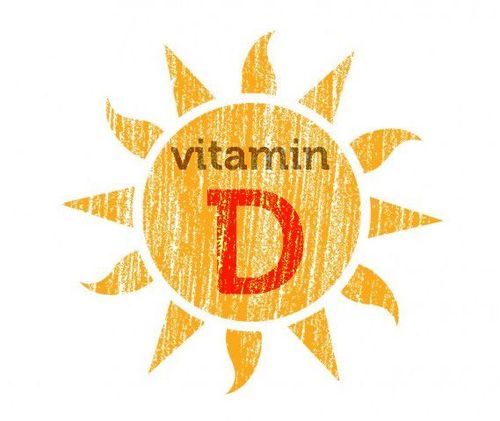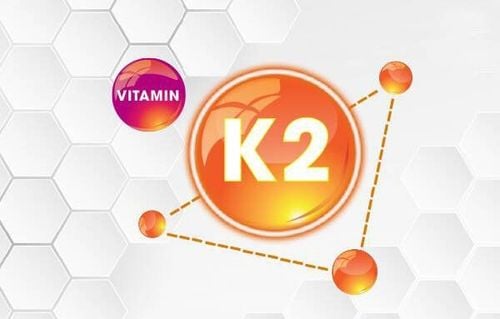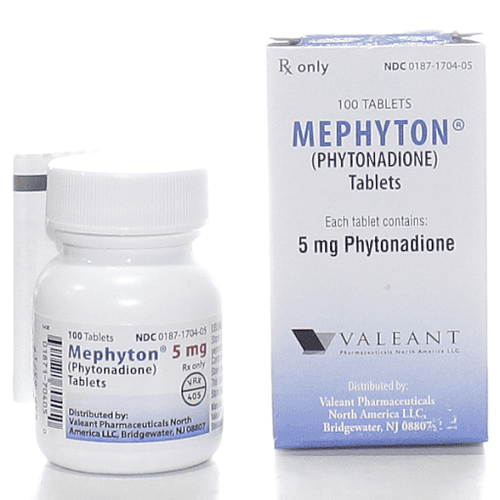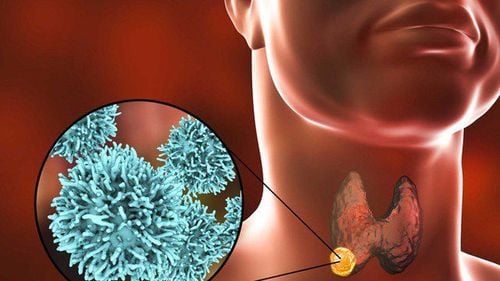This is an automatically translated article.
Vitamin K is known for its key role in blood clotting. Although there are different types of vitamin K, the two most commonly found in the human diet are vitamin K1 and vitamin K2.1. What is Vitamin K?
Vitamin K is a fat-soluble vitamin that includes many other vitamins with a similar chemical structure. Vitamin K was discovered by accident in the 1920s and 1930s after diets that restricted foods of animal origin caused excessive bleeding.Although there are different types of vitamin K, the two most commonly found in the human diet are vitamin K1 and vitamin K2. Vitamin K1, also known as phylloquinone, is found mainly in plant-based foods such as green leafy vegetables. Vitamin K1 makes up about 75% to 90% of the total vitamin K in the human body. Vitamin K2 is found in fermented foods and foods of animal origin, in addition to being produced by the gut microbiota. Vitamin K2 also includes many other subgroups called menaquinones (MKs) and is named based on the length of its chain, which extends from MK-4 to MK-13.
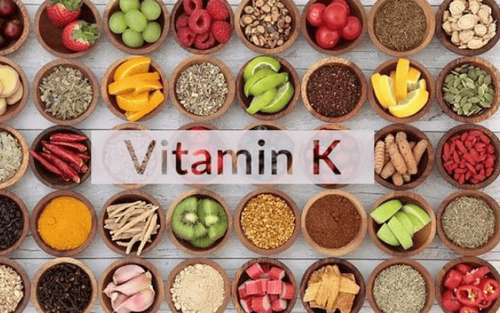
Mặc dù có nhiều loại vitamin K khác nhau, hai loại được tìm thấy phổ biến nhất trong chế độ ăn của con người là vitamin K1 và vitamin K2
2. Food sources rich in vitamin K1
Vitamin K1 is produced by plants, especially green leafy vegetables. They are the main form of vitamin K found in the human diet. The list below lists vitamin K1-rich foods with each value representing the amount of vitamin K1 in each cup of cooked vegetables, including:Kale: 1062 mcg Kale: 1059 mcg Spinach : 889 mcg Radish leaves: 529 mcg Broccoli: 220 mcg Brussels sprouts: 218 mcg
3. Food sources rich in vitamin K2
Foods containing a lot of vitamin K2 are quite diverse, depending on the subgroup of vitamin K2.Vitamin K2 MK-4 is found in foods of animal origin and is the only form not produced by gut bacteria. Chicken, egg yolks and butter are rich food sources of MK-4.
Below the group of vitamin K2 from MK-5 to MK-15 are forms with longer protein chains. Unlike MK-4, they are produced mainly by bacteria and are found in fermented foods. Natto is the name of a popular dish in Japan made from fermented soybeans that are rich in MK-7. Soft and hard cheeses are also high in vitamin K2 in the form of MK-8 and MK-9 subtypes. In addition, a recent study discovered that many pork products contain vitamin K2 from MK-10 to MK-11.
The amount of vitamin K2 in 100 grams of some foods is listed below:
Natto: 1062 mcg Pork sausage: 383 mcg Hard cheese: 76 mcg Minced pork: 75 mcg Chicken: 60 mcg Cheese soft apricots: 57 mcg Egg yolks: 32 mcg

Thịt gà là nguồn thực phẩm giàu vitamin K2
4. The difference between vitamin K1 and vitamin K2 inside the human body
The main function of all types of vitamin K is to activate proteins that work in the blood clotting chain, to regulate the health of the cardiovascular system and the skeletal system of the human body. However, because of many differences in absorption and transport to tissues in the body, vitamin K1 and vitamin K2 can have major differences in human health.In general, vitamin K1 is found in plants and is poorly absorbed inside the human body. One study estimated that less than 10% of the vitamin K1 content found in green vegetables is actually absorbed. On the other hand, the absorption of vitamin K2 is not well understood. Experts say that vitamin K2 is often found in fatty foods, so they are better absorbed than vitamin K1. This view stems from the fact that vitamin K is a group of fat-soluble substances that are better absorbed when eaten with a high-fat diet.
In addition, the vitamin K2 subgroups have longer circulating side chains in the blood than vitamin K1. Vitamin K1 can stay in the blood for many hours while vitamin K2 can be found for days. Some researchers believe that vitamin K2's longer circulation time allows it to be better used and metabolized in different tissues in the body. Vitamin K1 is transported and used mainly in liver tissue.
These differences are very important in determining the difference in the roles of vitamin K1 and vitamin K2 with the functioning of the human body.
5. The benefits of vitamin K1 and vitamin K2 for the human body
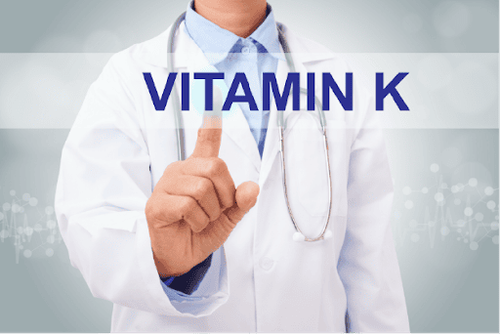
Vitamin K đóng vai trò quan trọng trong chức năng đông cầm máu, hệ xương răng và hệ tim mạch
Vitamin K and blood clotting Many of the proteins involved in blood clotting are vitamin K dependent compounds. Blood clotting may sound like an unhealthy phenomenon at first glance. However, if it does not happen, the human body can face massive bleeding and easy death with just a small wound due to blood loss.
Some people have clotting disorders and need to take anticoagulants to prevent blood clots from forming on a regular basis, such as warfarin. When using these drugs, patients should take appropriate vitamin K with vitamin K because of its effect on the formation of blood clots.
In most cases, vitamin K1 gets more attention through finding and consuming a variety of foods rich in vitamin K1. However, controlling vitamin K2 supplementation is also important. One study found that a serving of vitamin K2-rich natto, which is made from fermented soybeans, changed blood clot levels for up to four days. This effect was greater when compared with foods rich in vitamin K1. Therefore, when using vitamin K-dependent anticoagulants, patients should monitor and control foods rich in vitamin K1 and vitamin K2 to ensure safety during treatment.
Vitamin K and bone and teeth Many experts believe that vitamin K activates proteins required for bone growth. Observational studies have linked low levels of vitamin K1 and vitamin K2 with a higher risk of fracture, although these studies do not demonstrate a causal relationship like studies with proof. Controlled studies examining the effect of oral vitamin K1 supplements on bone loss have often been inconclusive. However, a large number of case-control studies have concluded that vitamin K2 supplementation significantly reduces the risk of fractures.
In summary, the current scientific data are not really unified, but recent evidence has convinced the European Food Safety Authority (European Food Safety Authority) that vitamin K is related directly to the skeletal system of the human body.
Vitamin K and the cardiovascular system Besides the clotting process and the bone system, vitamin K also plays an important role in the prevention of cardiovascular diseases. Vitamin K activates a protein that helps prevent calcium deposition in the arteries. This deposition of calcium plaques contributes to the formation of atheroma, which is a risk factor for various cardiovascular diseases.
Many observational studies suggest that vitamin K2 is better able to reduce the appearance of calcified plaques than vitamin K1, thereby reducing the risk of cardiovascular diseases. However, higher-quality case-control studies suggest that both vitamin K1 and vitamin K2 (particularly under the MK-7 group) significantly improve cardiovascular health. However, more research is still needed to prove whether vitamin K supplementation really improves cardiovascular health in humans and whether the role of vitamin K2 is more important than vitamin K1 in preventing cardiovascular disease. prevent various cardiovascular diseases.
6. Vitamin K Deficiency

Biểu hiện nổi bật của tình trạng thiếu hụt vitamin K là chảy máu khó cầm
The most prominent manifestation of vitamin K deficiency is bleeding that is difficult to stop, usually as assessed by a physician. In the absence of vitamin K deficiency in the body, vitamin K levels may still be low enough to prevent cardiovascular diseases or bone and joint disorders such as osteoporosis. Therefore, the human body needs to be supplemented with enough vitamin K to meet the basic needs.
Vinmec International General Hospital with a system of modern facilities, medical equipment and a team of experts and doctors with many years of experience in medical examination and treatment, patients can rest assured to visit. examination and treatment at the Hospital.
To register for examination and treatment at Vinmec International General Hospital, you can contact Vinmec Health System nationwide, or register online HERE.
Reference source: healthline.com
SEE MORE
What disease does vitamin K deficiency cause? Prevention of vitamin K deficiency and cerebral hemorrhage in children Vitamin K deficiency can cause cerebral hemorrhage in children




